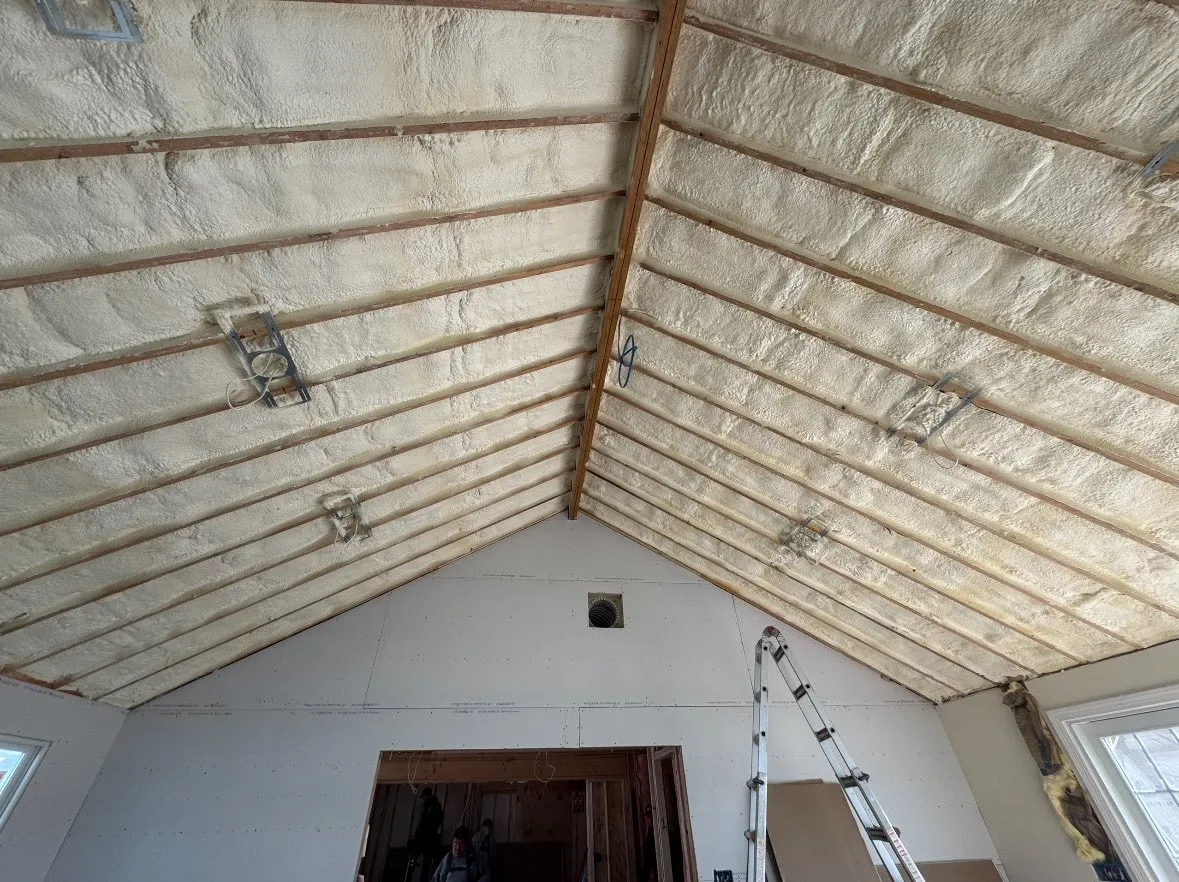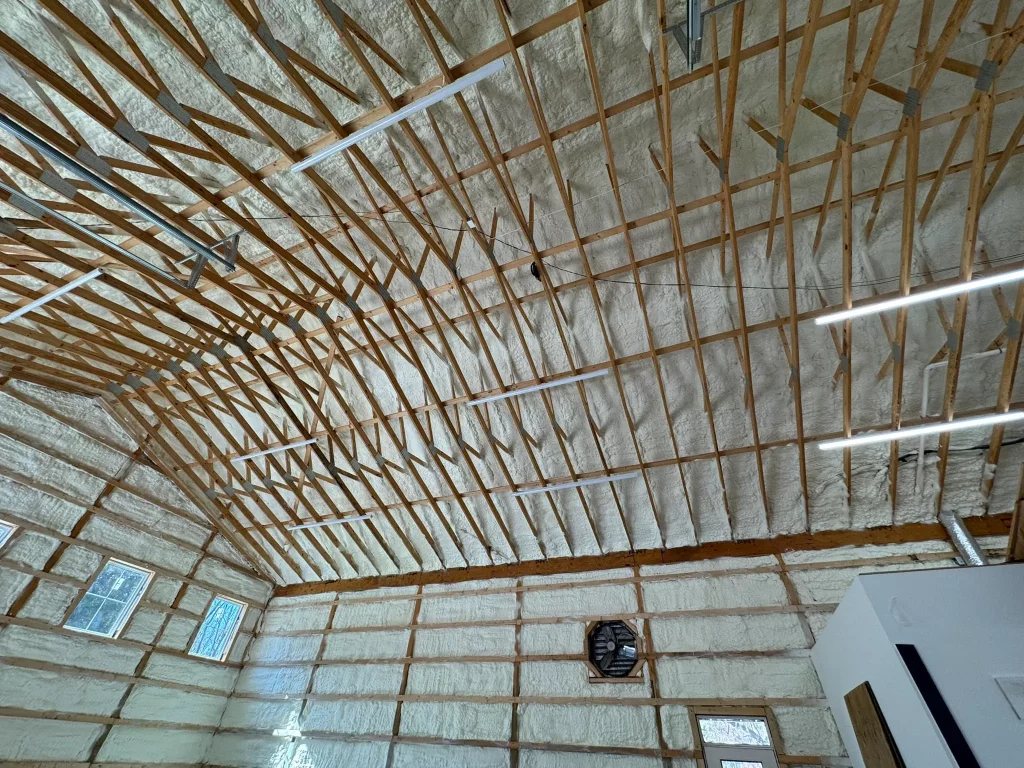
Homeowners in Annapolis often wonder how long it takes to recoup the cost of adding insulation. The typical payback period for an insulation investment here ranges from three to five years. This estimate comes from energy savings that offset the initial expense through lower heating and cooling bills. Factors like the type of insulation, home size, and local energy prices shape this timeline.
This article breaks down the details behind that range and covers what affects payback times. Readers will find practical steps to calculate their own returns, plus regional tips for Maryland’s climate. Peninsula Insulation, LLC has handled numerous projects in the area, drawing on years of local installations to share reliable guidance on energy efficiency.
Payback periods vary based on several key elements. Insulation type plays a big role; spray foam seals gaps better than fiberglass, leading to faster returns in drafty older homes common in Annapolis. Home age matters too, since pre-1980s buildings often lack proper barriers and benefit more from upgrades.
Energy costs in Maryland add up quickly. According to the U.S. Energy Information Administration, average residential electricity prices hit about 15 cents per kilowatt-hour in 2023, while natural gas runs around $1.30 per therm. These rates mean insulation cuts utility bills noticeably, especially during humid summers and chilly winters.
Climate specifics speed up payback in this region. Annapolis faces hot, sticky summers that demand strong air conditioning and cold snaps that require solid heating. Proper insulation reduces the load on HVAC systems, saving 10-20% on annual energy use, per data from the Department of Energy.
As shown in this image: A before-and-after view of an Annapolis home attic with new insulation installed, showing improved coverage and energy efficiency.
To figure out payback, start with the total installation cost. For a standard 2,000-square-foot home in Annapolis, expect $3,000 to $8,000 depending on materials and scope. Next, estimate annual savings. Insulation typically lowers energy bills by 15% on average.
Take a sample: A household spends $3,000 yearly on utilities. A 15% cut saves $450 per year. Divide the $3,000 installation cost by $450, and the payback hits about seven years. But in Annapolis, where humidity drives up cooling needs, savings often reach 20-25%, or $600 to $750 annually, shortening that to four to five years.
Use this simple formula: Payback Period = Installation Cost / Annual Energy Savings. Tools from the Oak Ridge National Laboratory offer free calculators to plug in local data for precise results.
Focus on attics first in your calculations; they account for 25% of home heat loss in Maryland’s variable weather, yielding the quickest returns.
Different materials deliver varying efficiency. Fiberglass batts cost less upfront but settle over time, extending payback to five years. Cellulose blown-in holds steady and pays back in three to four years, ideal for filling odd spaces in colonial-style homes.
Spray foam expands to seal air leaks, offering the shortest payback at two to three years. It shines in coastal areas like Annapolis, where moisture control prevents mold. Rigid foam boards work well for basements, with returns around four years.
Here’s a table comparing common types based on typical Annapolis installations:
| Insulation Type | Upfront Cost per Sq Ft | Estimated Annual Savings | Typical Payback (Years) |
|---|---|---|---|
| Fiberglass Batts | $0.50 – $1.00 | $200 – $300 | 4 – 5 |
| Blown-in Cellulose | $1.00 – $1.50 | $300 – $400 | 3 – 4 |
| Spray Foam | $1.50 – $3.00 | $400 – $600 | 2 – 3 |
| Rigid Foam Boards | $0.80 – $1.20 | $250 – $350 | 3 – 5 |
Data draws from regional averages; actual figures depend on home specifics.
Annapolis sits in a humid subtropical zone, with average highs of 87°F in July and lows of 28°F in January. This swing pushes homes to work harder on temperature control. Insulation combats the humidity that seeps into walls, reducing dehumidifier use and related costs.
Local building codes require R-38 attic insulation for new construction, but many older homes fall short at R-19. Upgrading meets code and boosts payback by tapping Maryland’s energy rebates, which cover up to 30% of costs through the Maryland Energy Administration.
Salt air from the Chesapeake Bay accelerates wear on unprotected materials, so choose moisture-resistant options. These adaptations cut long-term maintenance, enhancing overall value.
As discussed with options like spray foam, pair insulation with air sealing; unchecked drafts in Annapolis’s older homes can double energy loss, stretching payback unnecessarily.
Assess current insulation levels with a simple inspection. Check attics for gaps or thin spots, and use a blower door test for whole-home efficiency. Budget for professional assessment, around $300, to avoid underestimating needs.
Review utility bills over the past year to spot peak usage months. In Annapolis, summer AC dominates, so prioritize cooling-focused upgrades. Factor in home resale value; well-insulated properties sell faster and for 5-7% more, based on Realtor.com market analysis.
Weigh DIY versus pro installation. DIY saves money but risks poor application, which voids rebates. Pros ensure even coverage, critical in humid climates.
Consider long-term goals like net-zero living. Insulation forms a base for solar or efficient windows, amplifying savings over time.
Many Annapolis residents ask about incentives. State programs like EmPOWER Maryland offer rebates that trim upfront costs by $500 to $2,000.
Others wonder if insulation affects indoor air quality. Quality materials with low VOCs improve it by blocking pollutants, especially in bay-adjacent homes.
A frequent query involves timing. Install in off-seasons like spring or fall to avoid peak contractor rates and get better focus on details.
Document everything for tax credits; the federal Energy Efficient Home Improvement Credit covers 30% of qualified insulation costs up to $1,200 annually.

Maryland’s rebates reduce initial outlay, often cutting payback by one to two years. Check eligibility through the energy administration site for current offers.
Yes, larger homes spread costs over more square footage, potentially lengthening payback. A 1,500 sq ft home might see three years, while 3,000 sq ft takes five.
Combining with duct sealing or new windows boosts savings by 30%, halving payback times in many cases.
Adding layers increases R-value but check compatibility to avoid moisture traps, which could extend payback if not done right.
In Annapolis’s climate, yes; its airtight seal handles humidity best, leading to superior long-term savings.
Insulation payback in Annapolis typically spans three to five years, driven by solid energy savings in the local climate. Calculate based on personal bills and home details for accuracy. Upgrades not only lower costs but also enhance comfort year-round.
Evaluate your setup against these factors, match needs to insulation types, and plan for rebates to maximize returns. Focus on goals like efficiency and durability for the best outcome.
Take time to review recent utility statements and inspect insulation gaps. For tailored advice on Annapolis installations, contact Peninsula Insulation, LLC at (410) 770-2624 or email wil@mdsprayfoam.net. Professionals can assess specifics and outline a clear path to energy savings without commitments.